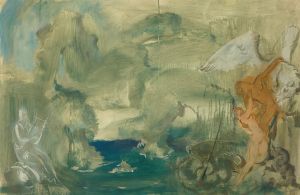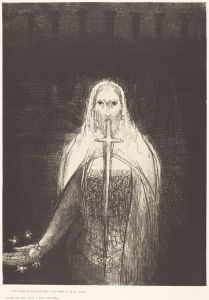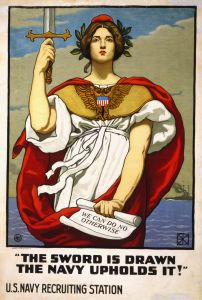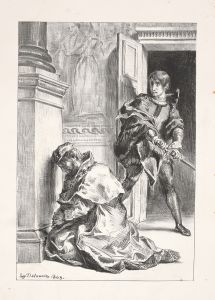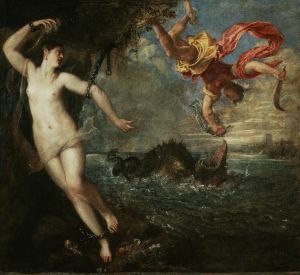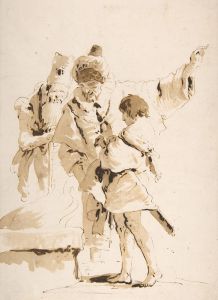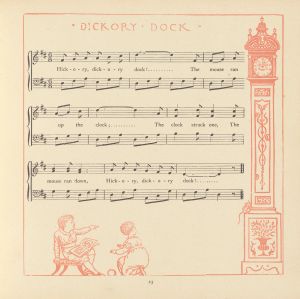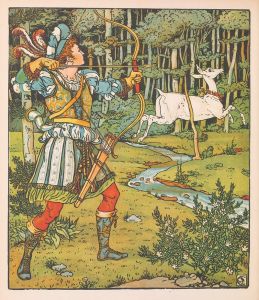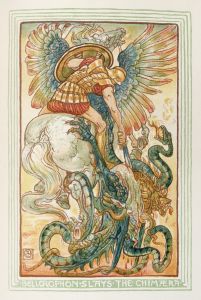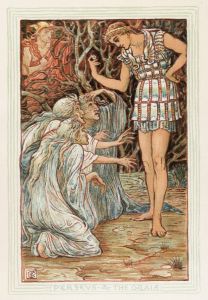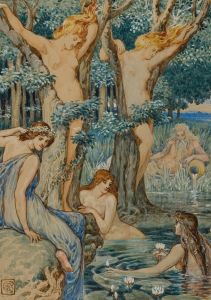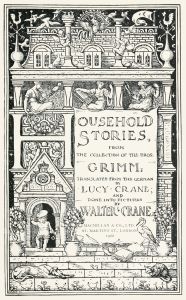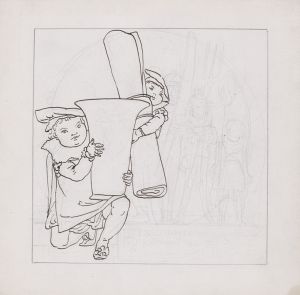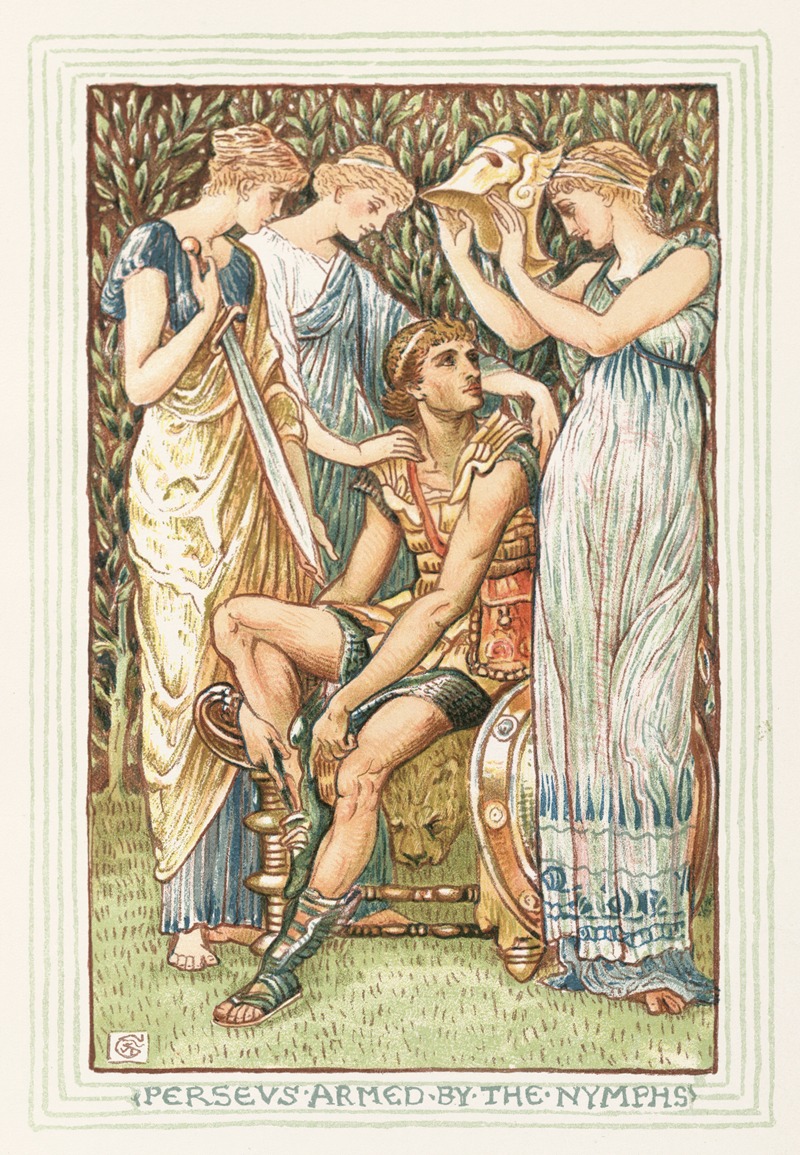
Perseus Armed by the Nymphs
A hand-painted replica of Walter Crane’s masterpiece Perseus Armed by the Nymphs, meticulously crafted by professional artists to capture the true essence of the original. Each piece is created with museum-quality canvas and rare mineral pigments, carefully painted by experienced artists with delicate brushstrokes and rich, layered colors to perfectly recreate the texture of the original artwork. Unlike machine-printed reproductions, this hand-painted version brings the painting to life, infused with the artist’s emotions and skill in every stroke. Whether for personal collection or home decoration, it instantly elevates the artistic atmosphere of any space.
"Perseus Armed by the Nymphs" is a painting by the British artist Walter Crane, completed in 1877. Walter Crane (1845–1915) was a prominent figure in the Arts and Crafts Movement, known for his illustrations, paintings, and designs that often drew upon classical mythology and literature.
The painting depicts a scene from Greek mythology, specifically from the story of Perseus. In this myth, Perseus, the son of Zeus and Danaë, is tasked with slaying the Gorgon Medusa, a monstrous creature whose gaze could turn people to stone. To accomplish this daunting task, Perseus receives assistance from various divine beings, including the nymphs.
In "Perseus Armed by the Nymphs," Crane illustrates the moment when Perseus is equipped with magical items by the nymphs. These items include the winged sandals of Hermes, which allow him to fly; the helm of Hades, which grants him invisibility; and a reflective shield from Athena, which he uses to view Medusa's reflection and avoid her petrifying gaze. The painting captures the essence of this mythological moment, emphasizing the divine intervention and the hero's preparation for his quest.
Crane's work is characterized by its detailed and decorative style, which is evident in "Perseus Armed by the Nymphs." The painting showcases his skill in composition and his ability to blend classical themes with the aesthetic principles of the Arts and Crafts Movement. The use of vibrant colors, intricate patterns, and careful attention to detail are hallmarks of Crane's artistic approach.
The painting is also notable for its allegorical elements, reflecting the Victorian fascination with classical mythology and its moral and educational values. Crane's depiction of Perseus and the nymphs can be seen as an embodiment of the virtues of bravery, wisdom, and divine favor, which were highly regarded in Victorian society.
"Perseus Armed by the Nymphs" is housed in the Walker Art Gallery in Liverpool, United Kingdom. The gallery, which is part of National Museums Liverpool, holds an extensive collection of fine art, including works from the Renaissance to the contemporary period. Crane's painting is one of the notable pieces in their collection, representing the intersection of mythological subject matter and the decorative arts.
Walter Crane's contribution to the Arts and Crafts Movement and his influence on subsequent generations of artists and designers are significant. His work, including "Perseus Armed by the Nymphs," continues to be studied and appreciated for its artistic merit and its reflection of the cultural and aesthetic values of the late 19th century.
In summary, "Perseus Armed by the Nymphs" by Walter Crane is a distinguished example of 19th-century British art, blending classical mythology with the decorative style of the Arts and Crafts Movement. The painting captures a pivotal moment in the myth of Perseus, showcasing Crane's talent for detailed and allegorical composition. It remains an important work within the collection of the Walker Art Gallery, highlighting the enduring appeal of mythological themes in art.





